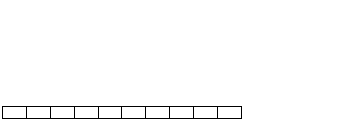65th (2nd Yorkshire North Riding) Regiment of Foot
![]()
|
65th (2nd Yorkshire North Riding) Regiment of Foot |
|
Jump to: [ Home
Page | Drill
TOC ]
Drill on this page [ Formation
in Single Rank | Dressing when Halted |
Marching to the Front and Rear | Wheeling
from the halt | Diagonal March]
![]()
When a squad is formed in rank the flank towards which men are ordered to touch is called the Pivot Flank, the opposite flank is called the Reverse Flank.
![]()
At this stage of the drill a few soldiers will be formed in single rank without intervals, that is, touching each other. The right-hand or left-hand man being first placed, the remainder will fall in in line one after the other, touching very lightly towards him. Soldiers must be carefully instructed in "The Touch," as it constitutes, in this formation, the principal guide and regulator when marching. Each man, when properly in line, should touch his right or left-hand man (towards the pivot flank) at the thick part of the arm, immediately below the elbow; the body must be preserved in the position described in Section 1, but the palms of the hands will be turned flat to the thighs; the elbows close to the sides, the thumbs as far back as the seams of the trousers, and close to the fore-finger.
![]()
Soldiers will first be taught to dress man by man, then together.
In dressing, each soldier will:
cast his eyes towards the flank to which he is ordered to dress, with a slight turn of the head, as directed in Section 3;
he must carry his body backward or forward with the feet, moving to his dressing with short quick steps,
bending backward or forward must be avoided,
his shoulders must be kept perfectly square, and
the position of the soldier, as explained in the preceding Section, retained throughout.
| Two men on
the right and one on the left, a pace and a half to the front.
Slow-March |
Preparatory to teaching a squad to dress by the right, the drill instructor must order the two men on the right, and one on the left, to take a pace and a half to the front; having completed his pace and a half, the right-hand man will take four side paces to his right; and the three points thus placed will raise their right arms from the elbow at right angles to their bodies. | |
| Man by
man, by the right -
Dress up |
The instructor having ascertained that the
points are in line, will order his squad to dress up by man.
The faces of the men, and not their breasts or feet, are the line of dressing. Each man is to be able to distinguish the lower part of the face of the second man beyond him. |
|
| Eyes-Front |
When the instructor is satisfied that the
line is correct, he will give the words Eyes-Front, on which
the men will:
|
The men must next be taught to dress forward and backward, taking the pace together, but shuffling up and back in succession, the same points being given as in dressing man by man. The words of command will be, Squad, By the Right (or Left) - Dress Up, or By the Right (or Left) - Dress Back.
All dressing is performed on the foregoing priciples. When soldiers are on the alignment they have to occupy, and when their dressing is simply to be corrected, the words By the Right (or Left) - Dress, or after the word Halt, the word Dress only will be given, on which they will shuffle up or back to their places successively, commencing with the man on the flank from which they are dressed.
When no man is placed for that purpose, the officer or instructor should invariably fix upon some casual object on which to dress the line.
![]()
The soldier will next pactise in squad without intervals the different marches and varieties of step which he has learned singly, or in squad with invervals; the same general rules being observed.
Before a squad is ordered to march, the pivot flank must be indicated by the caution, By the Right, or By the Left.
During the march, care must be taken that neither the head nor eyes are ever turned towards either flank, that the dressing is kept by the touch only, and that the body and shoulders are kept perfectly square and the body steady.
The squad will first be taught to march straight to the front, both by the right and left, in slow and quick time; it will then be practised in all the varieties of step and in marking time, in both cadences; after which it will be exercised in double time.
The soldier must be practised in changing the pace, without halting, from slow to to quick, and from quick to slow time, as well as from quick to double, and from double to quick: in the case last mentioned, on the word Quick, the arms will be dropped and the fingers extended.
The instructor should occassionally remain halted in rear of the pivot man, and by fixing his eyes on some distant object ascertain if the squad is marching straight to its front.
When a soldier loses his touch, or finds himself a little behind or before the other men of his squad, he must be taught to recover his place in the rank gradually, and on no account to jump or rush to it, which would make him unsteady, and spoil the marching of the rest of the squad.
![]()
| Right-Wheel. |
|
|
| Slow-March |
The squad will step off,
|
|
| Squad-Halt |
|
|
| Dress |
|
|
| Eyes-Front |
|
As squad will wheel to the left in like manner

| On the Right, Backwards -Wheel. |
|
|
| Slow-March |
The squad will step back,
|
|
| Squad-Halt |
|
|
| Dress |
|
|
| Eyes-Front |
|
A squad will wheel backwards on the left in like manner.
No rank of more than 12 men should be wheeled backwards; they should be faced about and then wheeled forwards, except when required to wheel a few paces only, which will be hereafter explained in Part II.
Wheeling must be practised in quick as well as slow time.
![]()
|
Right [Left] - Wheel |
|
|
Forward |
|
![]()

| Right half- Face |
|
|
| March |
|
|
| Halt-Front | Halt and face the original front. |
| Right half- Turn |
|
|
| Front-Turn |
|
![]()
Updated 12 June, 2001